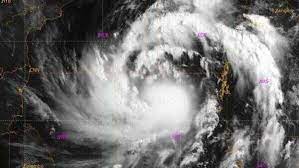INVC NEWS
New Delhi – :The monsoon season is a crucial period for agricultural activities in India. Farmers eagerly await the arrival of the monsoon rains to nourish their crops and ensure a successful harvest. However, this year, forecasting agency Skymet Weather has predicted a weak monsoon over the next four weeks in the country, posing challenges for the agricultural sector.
According to Skymet Weather, the weak monsoon conditions are expected to persist until July 6. This prolonged period of limited rainfall can have severe implications for agricultural areas, leading to cracks in the soil and drought-like conditions. It is particularly worrisome as this period coincides with the crucial sowing time when farmers prepare their fields in anticipation of the forthcoming rains.
The central and western parts of India may face significant difficulties in coping with the effects of drought due to inadequate rainfall during the early stages of the monsoon season. The Southwest Monsoon, which typically reaches Kerala around June 1, was delayed by a week this year due to Cyclone Biparjoy in the Arabian Sea. This cyclone not only disrupted the onset of monsoon over Kerala but is now hindering the progress of the rain-inducing system, preventing it from reaching interior areas of the peninsula.
Historically, by June 15, monsoon rains typically cover regions like Maharashtra, Odisha, Telangana, Chhattisgarh, Jharkhand, and Bihar. However, this year, these areas are still grappling with a lack of adequate showers. Presently, the monsoon is limited to the northeast and west coast, with no signs of significant weather systems emerging over the Bay of Bengal in the near future.
The weak monsoon conditions and delayed onset can have profound implications for the agricultural sector and the overall economy. Farmers heavily rely on monsoon rains for their livelihoods, and inadequate rainfall can lead to crop failures, reduced yields, and even economic distress.
To mitigate the adverse effects of a weak monsoon, it is crucial for farmers and policymakers to adopt appropriate strategies and measures. Here are some key considerations:
- Water Conservation and Management: With limited rainfall, effective water conservation and management practices become paramount. Farmers should explore techniques such as drip irrigation, rainwater harvesting, and efficient water usage to optimize water resources.
- Crop Selection and Diversification: During a weak monsoon, selecting suitable crops that are more resilient to water scarcity becomes crucial. Farmers can opt for drought-tolerant crop varieties and consider diversifying their agricultural activities to minimize risks.
- Soil Health Enhancement: Improving soil health is vital for increasing its water-holding capacity and resilience during dry spells. Adopting organic farming practices, incorporating organic matter into the soil, and proper nutrient management can help enhance soil fertility and moisture retention.
- Weather Forecasting and Information Dissemination: Accurate and timely weather forecasts are indispensable for farmers to make informed decisions. Strengthening weather monitoring systems and ensuring effective dissemination of weather-related information can enable farmers to plan and manage their agricultural activities better.
- Access to Credit and Insurance: In times of agricultural uncertainties, farmers require adequate financial support and risk mitigation measures. Ensuring accessible credit facilities and crop insurance schemes can help protect farmers from potential losses and provide them with the necessary financial stability.
The challenges posed by a weak monsoon call for proactive measures and collaborative efforts from various stakeholders. Governments, agricultural institutions, researchers, and farmers need to work hand in hand to develop and implement strategies that can mitigate the impact of water scarcity and safeguard the agricultural sector.
While the current monsoon conditions may seem unfavorable, it is crucial to remember that weather patterns can be unpredictable. Nature has its rhythms and cycles, and despite the challenges, there is always room for resilience and adaptation. By leveraging knowledge, innovation, and collective action, we can overcome the hurdles posed by a weak monsoon and ensure a sustainable future for Indian agriculture.














